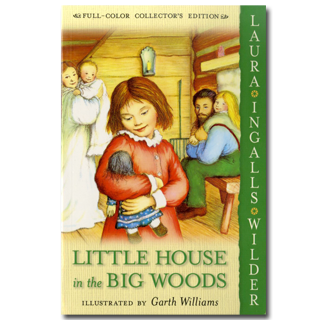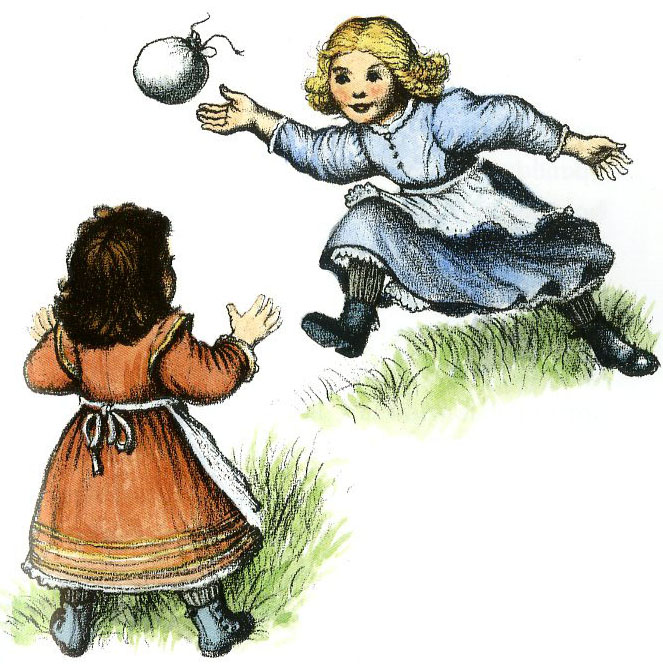
A FEW OTHER EVENTS FOR
JULY 10:
- It’s the birth date of Martin Provensen (1916-1987) The Year at Maple Hill Farm, and Mary O’Hara (1885-1980), My Friend Flicka.
- Arthur Ashe (1943-1993) was also born on this day. Read Game, Set, Match Champion Arthur Ashe by Crystal Hubbard, illustrated by Kevin Belford, and Arthur Ashe: Against The Wind by David Collins.
- Happy birthday to Dublin, Ireland, founded in 988 A.D. Read Patrick: Patron Saint of Ireland by Tomie dePaola.
- Best birthday wishes to Wyoming, the 44th state, as of 1890. Read Green Grass of Wyoming by Mary O’Hara (who also celebrates her own birthday today).
- It’s Don’t Step on a Bee Day, as is every day. Read The Bee Tree by Patricia Polacco, Bee-Bim Bop by Linda Sue Park, illustrated by Ho Baek Lee, and Quilting Bee by Gail Gibbons.
During several July weekends the annual Laura Ingalls Wilder Pageant takes place in De Smet, South Dakota. In the town made famous by Mrs. Wilder, the festival includes an outdoor pageant depicting scenes from her life and books. Published in the thirties and called the “books that the Depression could not stop,” Laura Ingalls Wilder’s fictionalized account of the events of her own life were published and immediately became popular at a time when many families had to do without necessities. She celebrated the dignity and the resilience of the American pioneer. Nothing was too small to be recycled and reused. Even a pig’s bladder could be blown up to become a balloon toy for young Laura. As writer Emily Bazelon states in Everything I Need to Know I Learned from a Children’s Book : “Every scrap mattered. That seemed enviable to me, somehow, as a child—it made the ease and carelessness of our throwaway culture seem dull and thoughtless by comparison.”
By the fifties Ursula Nordstrom of Harper thought the books needed redesigning for modern times. She brought illustrator Garth Williams in, to work his usual charm, and he gave the books the look and feel that they have today. During this time period newly illustrated books fascinated children who lived in cities; they had no sense of small, farm communities—the life of most Americans just a couple of generations back.
In nine books, the Wilder family moves from Lake Pepin, Wisconsin, to De Smet, South Dakota, and Laura grows up to have children of her own. One of these children, Rose Wilder Lane, was a ghostwriter by trade. In looking over the original manuscripts for the books, scholars have determined that Rose definitely had a hand in helping her mother craft this magnificent series. She typed, edited, and probably even wrote some sections of the books we have today. One of the greatest mother/daughter collaborations of all times, this effort was not acknowledged during the publication years. Dual-author books were considered substandard. Today both women would appear on talk shows and discuss how they work together!
No matter how the books initially came to be, they remain one of the best-remembered stories of childhood. They stand as a testament to American strength, fortitude, family, and community. In the end, the Little House series confirms that having a loving family and friends constitute true wealth for both an individual and a nation.
Here’s a passage from Little House in the Big Wood:
The meat was laid on a board in the backdoor shed, and every piece was sprinkled with salt. The hams and shoulders were put to pickle in brine, for they would be smoked, like the venison, in the hollow log.
“You can’t beat hickory-cured ham,” Pa said.
He was blowing up the bladder. It made a little white balloon, and he tied the end tight with a string and gave it to Mary and Laura to play with.
Originally posted July 10, 2011. Updated for .














These are my favorite books from childhood, My 4th and 5th grade teacher, Miss Rowell, read to us from these books everyday. When it came time to write my first children’s book series, Willie Pearl, I patterned them after these books. They are wonderful and timeless.
Michelle Y. Green
The illustrations are as lovely as the content.
What impressed me most about this book was all the detail she used in explaining everyday life during that period.
I felt as though I was looking at a kind of cultural textbook with blueprints.
I spent hours “being” Laura in my backyard. It was my woods and my prairie. I was lucky enough to have a little wooden shed in my backyard, it was my log house. I cherish those memories and am so grateful to the TWO authors!
It’s time for me to re-read these. When we adopted my sister, I was ten. And both the book and the TV show were such an important part of my life, that I wanted to name her Laura, or Caroline, or Mary…
The story of how The Little House in the Big Woods was a “book the Depression could not stop” is a story I am working on…Virginia Kirkus at Harper has become a bit of an obsession of mine.
Thanks for this lovely post. How grateful I am for Ursula’s decision to employ Garth Williams. I was so aghast a few years ago when Harper changed the covers again and put photographs on the front.
signed, publisher geek and booklover
Also interesting to note, given Ayn Rand’s rise as an icon of the Right, is that Rose Wilder Lane was a friend and follower of Rand. It’s the kind of fact (given my politics anyway) that keeps poking its unpleasant nose into my brain when I read the Little House books.
Great article! Don’t miss out on Walnut Grove’s celebration too. The first weekend went wonderful. Over 1000 attending opening night. The Wilder Pageant continues next week July 15 & 16 and 22 & 23! Don’t forget about the Laura & Nellie look-a-like contest on Sat. July 15th registration is at 1:30pm. All Walnut Grove businesses are opened extended hours on those weekends. Don’t forget about the Dugout site & LIW Museum!
These books will always be a treasure. I read them when I was in 4th grade. When my daughter was little, I read them again to her. Together we looked forward to listening to a new chapter or two every evening.
I work at a public library and am delighted to see that people of all ages continue check the books out!
There is no easy way to sum up my love for these books. They have honestly played a role in making me who I am today. My childhood wouldn’t have been the same without these books. My own mother attended school in a one-room-schoolhouse in northern Wisconsin, and the stories she told me have mingled together in my mind with the Wilder stories, making a whole new mythology for me. I tell my kids stories about Grandma’s childhood, and I realize later that I’m mixing up her history with Wilder’s books. And you know what? I’m okay with that!! I don’t think my mind will ever straighten out which stories belong to whom. Oh, I adore these books!!
Thanks for highlighting this book. I have such fond memories reading and rereading the Wilder series. And passing the books down to my sisters and daughter.
Thank you for highlighting this book! It was one of my favorites as a child. I also have fond memories of reading and rereading the books and watching Little House on the Prairie (on TV). My grandfather also loved the series. I remember he borrowed my books once so he could read through the series. Although I no longer have him with me, I still have the memories and the books!
Also, whenever a student asks me what my favorite books were as a child, I always tell him/her about these books.
Its because of these books and Laura’s story that I became such an avid reader as a child. I finally realized at 30 that I should be teaching, just like Laura. I hope children continue to enjoy her books as much as I did.
I read this book to my second grade students and they were fascinated by it! I teach in a small town with lots of fun woods and rivers to explore in, so they were able to relate to some parts of the book, but they were fascinated by how different life was “in the olden days” (as they put it). We had great discussions about the differences between now and then, such as how many things they had to make for themselves rather than go to the store to buy, or how long it took them to do jobs that we speed up with the use of cars, sewing machines etc. Playing, “olden days” became a favorite playground pastime, and two students even made costumes and dressed up like Laura and Mary for Halloween. What a wonderful book to inspire the thoughts and play of children!
I loved Laura Ingalls Wilder growing up. They were the first books I read that I would reread several times. So many fond memories of this series!
Cheryl and I read this series when we were kids, and had the whole series of books, I often look for wholesome family materials.
So glad you picked Laura for an entry. Here is my post about Laura Ingalls Wilder events all around the country this month. July is a big Laura month.
http://trundlebedtales.wordpress.com/2013/07/04/laura-ingalls-wilder-events-july-2013/
As a teacher for three decades at the Calvert School in Baltimore, I became fascinated with the series, especially with the wholesome values in the books and with the “liberal arts” education about the pioneer days of the late nineteenth century that the books painlessly teach. This interest resulted in the writing of very detailed reading guides to the books, available through Calvert Education Services, and in a retirement career in which I present lectures and workshops on them and on Mrs. Wilder’s pre-book career as a journalist. Yes, “Little House” is being appreciated now by a fourth generation!
I was a bit hesitant to share this book with my first graders because I felt that they wouldn’t be able to visualize and make connections with the lifestyle of Laura and her family. I couldn’t have been more mistaken. My students took so much away from this timeless tale. We were able to learn new vocabulary, compare and contrast our lives with theirs, and I even noticed that all of my students began to “play Little House” out on the playground at recess. Of course, everyone wanted to be baby Carrie! These books will live on.